How to Burglar-Proof Your Home: Top 21 Effective Ways to Avoid Break-Ins
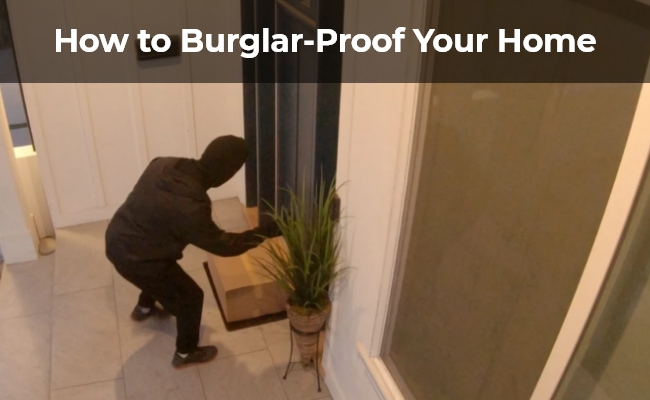
Have you ever wondered what the chances could be that an intruder will break into your house? In the United States, a home burglary happens once every 25.7 seconds. The sad truth is that no neighborhood is immune to the risk of burglary. Many homes experience burglaries yearly, resulting in financial losses and the emotional pain of privacy invasion and security breaches. This article will offer 21 practical ways to burglar-proof your house and enhance your home defense. Try these methods and make your home safer and more impenetrable.
Reasons to Secure Your Home Against Burglary
Burglar-proofing homes is essential to protect your property, your loved ones, and your peace of mind. Most burglars prefer easy targets, and a well-protected home is less appealing. The presence of a burglar can put your family's safety at risk. Burglar-proofing measures can reduce the chance of confrontation with intruders. Furthermore, your home likely contains valuable possessions, including electronics, jewelry, artwork, and important documents. Burglar-proofing measures can effectively help safeguard these items from theft.
How to Burglar-Proof Your Home: Top 21 Effective Ways
By implementing effective preventive strategies, you can significantly reduce the chances of your home becoming a burglary target.
1. Reinforce Your Doors with Hardware
The most common entry points for burglaries are doors and windows. As a result, reinforcing these entry points becomes essential. It would be best if you started by choosing the right door. An ideal front door should be thick and heavy. You can use hardware to secure your doors. For example, door reinforcement plates are metal plates that strengthen the area around the lock and strike plate. They distribute force more evenly, making it harder to kick in the door. You can also consider security chains to open the door partially.
2. Upgrade Locks and Deadbolts
A robust lock is one of the best ways to secure your doors. You can upgrade your existing locks to smart locks with keyless entry points, remote monitoring, and access control. Some advanced models even come with cameras, which allow you to see everything that happens in front of your door.
You can choose single or double-cylinder locks if you prefer physical keys. A double-cylinder deadbolt lock requires a key from inside and outside the door, preventing a burglar from reaching in through a broken window to unlock the door. On the other hand, a single-cylinder deadbolt lock has just a one-inch throw. This type of lock is ideal for metal or wood doors without windows.
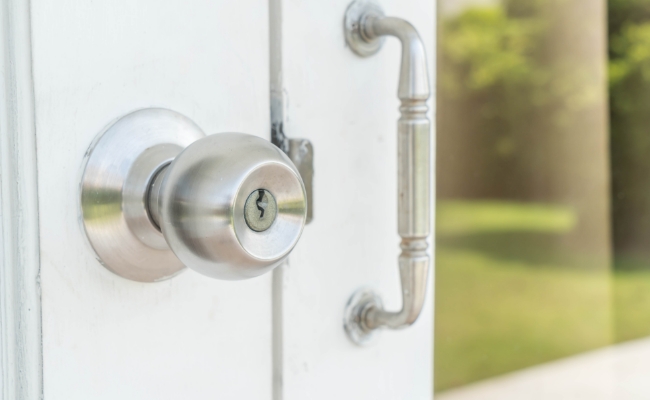
3. Use Window Security Bars and Grilles
Windows are also a common point of entry for burglars. Keep them covered (close your blinds or drapes), and always keep them firmly latched. Besides these gadgets, window security bars and grilles help secure your windows. Installing anti-theft bars on windows makes it hard for burglars to pry the bars and enter the property. You can also put the window security grilles inside of the windows, which won't detract from the looks of the house outside.
4. Add Window and Door Alarms
After adding all the possible hardware to your doors and windows, you must keep them locked. And then, you can install alarms around them. Burglars hate noise and prefer to operate discreetly to minimize the risk of being detected and reported to the authorities. When doors or windows are opening, alarms can be activated. The alarming sounds can attract attention from neighbors or passersby, increasing the chances of being caught in the act.
5. Invest in Security Cameras
Installing security cameras makes it much more difficult for burglars to enter your home and can alert you if there's been a break-in. Statistics show that a home without a security system is roughly three times more likely to be broken into. Advanced camera models have motion detection functionality and will send real-time notifications to you when someone has entered or is attempting to enter your home. Most also have built-in sirens and spotlights, reminding burglars that you have a security system.
4K 8MP Wire-Free 4G LTE PT Battery Camera
4K 8MP; Smart Detection; 355° Pan & 140° Tilt; Battery/Solar Powered; Color Night Vision; Smart Real-Time Alert.
6. Install Motion Sensors at Entry Points
Motion sensors, also known as motion detectors, are electronic devices designed to detect movement or motion in a specific area. To enhance entry point security, you can install motion sensors at your doorstep, driveways, or balconies. When an intruder enters the room covered by a motion sensor, it triggers immediate responses, such as sounding an alarm or sending alerts to you or a security monitoring service.
You can also integrate these sensors into your smart home system and set up automation routines between the sensors and other smart home devices. For example, when the sensor detects movements. It will automatically activate other security measures, such as lights or cameras.
7. Use Security Mailbox
Securing your mail is another crucial aspect of preventing home burglary. Burglars sometimes target mailboxes to steal personal information, such as bank statements, credit card offers, and bills. This information can be used for identity theft or financial fraud. Furthermore, burglars can monitor your mailbox to determine if you're away on vacation or not home. A mailbox overflowing with mail or packages indicates that no one is home.
To secure your mail and reduce the risk of home burglary and related crimes, you can use a locked mailbox or a mailbox with a slot that prevents unauthorized access. When you're on vacation, redirect your packages or mail delivery to prevent mail from piling up.
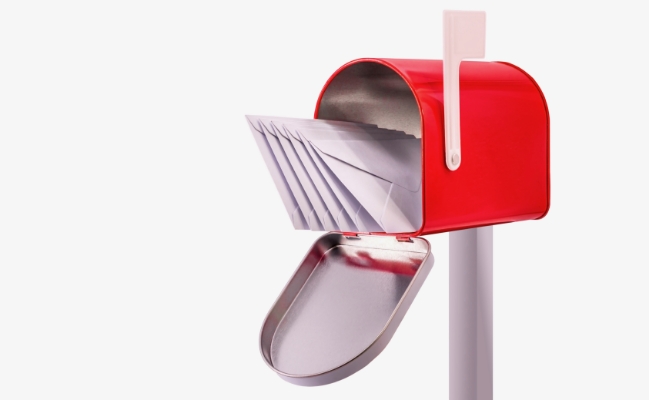
8. Light Up Your House
Well-lit properties are less attractive to burglars and intruders because they are more likely to be seen by neighbors, pedestrians, or security cameras. Adequate lighting can act as a deterrent and make potential criminals think twice before approaching your home. You can install different lighting fixtures inside or around your home using distinct color temperatures or light bulbs to ensure that you and others can see clearly around your property.
9. Set Up Lighting Timer
Lighting fixtures can also help create the illusion of occupancy in your house. You can try lighting timers or smart lighting systems and program them to turn on and off at specific times. Sufficient lighting can create the scenario that someone is home, even when you're away, and deter burglars who may target vacant properties.
10. Install Motion-Activated Lighting
Lighting can also maximize the effectiveness of home security cameras. Adequate lighting contributes to clear footage and rich details. Motion-activated lights can be a powerful complement to security systems. They will illuminate when motion is detected, give cameras enough light sources, alert you to potential intruders, and discourage them from approaching further.
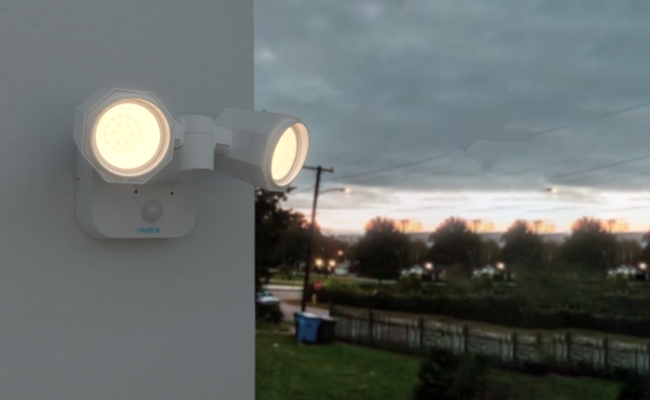
11. Store Valuables in a Safe
A safe serves as a reliable storage solution for valuables. A safe offers a highly secure environment for storing valuable items, such as jewelry, cash, important documents, and sentimental items. When burglars enter a home, they often have limited time to search for valuables. Even if they have found the safe, the robust construction and locking mechanisms of safes make it difficult for burglars to break in. You can hide your safe in the right place to avoid losing your valuables.
12. Hide Spare Keys Properly
Hiding your spare key is essential to maintain home security while ensuring access in emergencies. If your spare key is too quickly discovered or accessible, it could fall into the wrong hands. Burglars are often familiar with common hiding spots and can exploit them to access your property. Don't have your house key on the porch under the doormat or flowerpot. Consider giving the extra key to a trusted neighbor or friend or putting them in a concealed lock box.
13. Lock Your Garage
Your garage door is one of the main targets for burglars. Always keep your garage door and window shut. Most homeowners may forget to lock their garage door when rushing to work in the morning. You can set up a daily push notification on your smartphone to remind you to close the garage door before you leave. Besides the standard lock of your garage door, you can install a padlock and put it right up next to the garage door inside. You can also set a hasp on the outside of your garage.
After locking your windows, you can cover your garage windows with curtains. With coverings, burglars can't directly see any tools or high-value equipment in your garage. Thus, you have made your garage an unwelcome target.
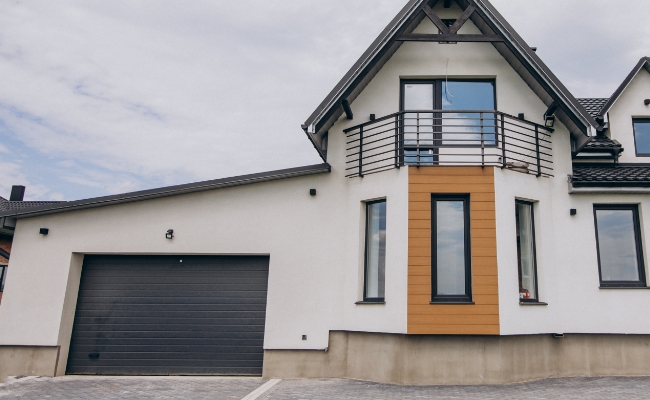
14. Secure Sheds With Screws
A shed is often used for storage or various other purposes. Many homeowners think burglars will only target it if it is locked. However, burglars can bypass the lock using a screwdriver to remove hinges and other hardware with exposed screw heads. Instead of a standard lock, you can use screws to secure your shed. For example, you can order tamper-proof security screws that require special removal tools.
15. Use Security Plants in Your Landscape
Security plants, such as thorny bushes and prickly hedges, create physical barriers that discourage intruders from attempting to access your property. These natural deterrents can be challenging to navigate or climb over, making your home less attractive to potential burglars.
Furthermore, well-placed defensive plants can provide natural concealment for windows and entry points. For example, bushes around your window can make it more challenging for burglars to identify vulnerabilities in your home's security.
16. Eliminate Hiding Spots
Don't leave any hiding spots for burglars inside your place. For example, large objects in yards or tall fences can give burglars an ideal place to hide and avoid being seen. You should remove large objects from your yard and regularly prune or upkeep plants to retain their security values.
17. Protect Sliding Glass Doors
Sliding glass doors are another vulnerable point in your home because they are easy to unlock and slide open. These doors are typically made of tempered glass, which can be shattered relatively quickly compared to other entry points like solid wood or metal doors. And they often provide a clear view into your home and make everything inside your room visible.
You can place a security bar or rob in your door's track to protect your sliding door and prevent it from being forced open. You can also replace standard locks with deadbolt locks explicitly designed for sliding glass doors. Applying security window film to the glass can also make the glass more resistant to impacts.
18. Fortify Patio Door Frames
Some burglars also choose the patio as their first entry point since patio doors are less visible from the street. Many patio doors come with less robust frames than entry doors. These weaker frames can be easily kicked or forced open. You can reinforce the door frame with a strike plate with longer screws. The longer screws anchor the plate more securely into the door frame and make it hard to kick the door open. You can also install a pin or rod at the top or bottom of the sliding door frame to prevent it from being lifted off the track.

19. Collaborate with Neighbors
You can also collaborate with your neighbors to prevent home burglary. Try to start this process by building relationships with your neighbors. Knowing them can encourage everyone to look out for each other. Remember to share contact information with your neighbors so you can easily reach each other in case of an emergency or to report unusual activity.
Establishing a formal or informal neighborhood watch program is one of the best ways to achieve community collaboration. This program involves neighbors working together to monitor and report suspicious activity. Neighbors can coordinate regular meetings to discuss security concerns and share information.
20. Avoid Oversharing on Social Media
Oversharing on social media can also make your home an attractive target for burglars. Don't post about your upcoming vacations or trips that can signal to burglars that your home will be vacant for an extended period. If you want to share your experiences with others, consider sharing vacation photos and updates after your return rather than in real time.
21. Prevent a Feeling of Emptiness
Most burglars avoid entering your home when you're there, so never leave your house in a state that makes it appear as if there is no one home. Feel free to keep your TV or radio running on workdays to maintain a constant background sound. Remember to leave the interior lights on when heading out at night. If you plan to be away for an extended period, it's a good idea to arrange for a neighbor or family member to collect your mail, as a buildup of mail can signal that the homeowner is away.
FAQs
What is the best way to protect my house from burglars?
Protecting your house from burglars involves a combination of physical and behavioral strategies to deter potential intruders and enhance your home's security. For example, you can install security cameras, set up exterior lighting, place defensive plants, collaborate with neighbors, etc. But remember that no security measure is foolproof. You should assess your security needs and find the most effective methods.
Do burglars break in through doors or windows?
Yes. Doors and windows are the most common entry points for burglars. Statistics show that 34% of burglars use the front door when breaking into a home, and 23% get into a house through a first-floor window.
What type of houses do burglars avoid?
Houses in obvious locations, such as corner lots, have fewer possibilities of experiencing break-ins. And most burglars claimed that they would avoid homes with large dogs. Burglars will also prevent security cameras. Data shows that homes lacking a home security system have a three times higher burglary risk than homes with such a system.
How do burglars pick a house to enter?
Burglars choose homes with visible weaknesses, such as unlocked doors or windows, broken fences, or poorly lit exteriors. They also look for unoccupied targets, such as during vacations or when residents work. Moreover, homes without security systems or visible security measures are more attractive targets.
Conclusion
Implementing distinct security measures, like installing security cameras, placing defensive plants, or enhancing entry points to enhance home security, is essential. Nobody wants to become a victim of home invasions. Check the 21 methods above and find the one that suits your security requirements.
We hope you find this article useful, and please share these tips with your family and friends. Do you have any unique methods to prevent burglars? Leave your comment below, and let's discuss it together!
Search
Be in the Know
Security insights & offers right into your inbox

